The past seven days have once again proved highly entertaining for June, with several excellent birds found throughout the week. Furthermore, with an interesting period of weather forecasted for the coming days, the fruitful run may not be over yet, as July looms into view.
Though on paper not the rarest bird of the week, it's hard to look past the male Little Bustard at Slimbridge WWT, Glos, which was unwittingly flushed off the sea wall on 23rd. It remained until at least 25th, but proved elusive in long grass by the Severn Estuary and was best seen on the scarce occasion that it decided to get up and have a fly around. Most records of the species come in the late autumn and winter period, with this rare mid-summer occurrence being just the fourth for June. Judging by the sizeable crowds, the prospect of seeing a fully-plumed male was too good to miss out on.
Little Bustard, Slimbridge WWT, Gloucestershire (Kenny Hills).
Quite where this bird has originated from will of course remain a mystery, but the concurrent arrival of a Red-headed Bunting in south-west Finland and – on home shores – a gorgeous Blue-cheeked Bee-eater at Achnahaird, Highland, on 23rd, suggests an origin on the Central Asian steppes. Looking back at wind charts for last week, this certainly seems feasible. The bee-eater was alas gone before news broke, having been watched hunting from wires for 10 minutes before flying off high to the west. Perhaps it adds a bit more weight to the recent claim from Gloucestershire? Either way, there are huge tracts of unwatched land in the Scottish Highlands and a relocation is more a fanciful prospect than a realistic one. Were it to be relocated and linger, it would no doubt generate one of the twitches of the year ...
On Monday, the mega alert sounded again. One fortunate observer was stunned to see a Sooty Tern calmly cruise into view close to the cliffs at Bempton, East Yorkshire, where it performed a couple of fly-pasts before drifting off north, being seen heading past Filey Brigg an hour or so afterwards. It's difficult to conclude that this can be anything other than last year's well-watched bird returning to the North Sea coast for a second summer running and one would have to say that a return to the Farne Islands seems likely in the coming days – it was here that it first appeared on 7 July last year.
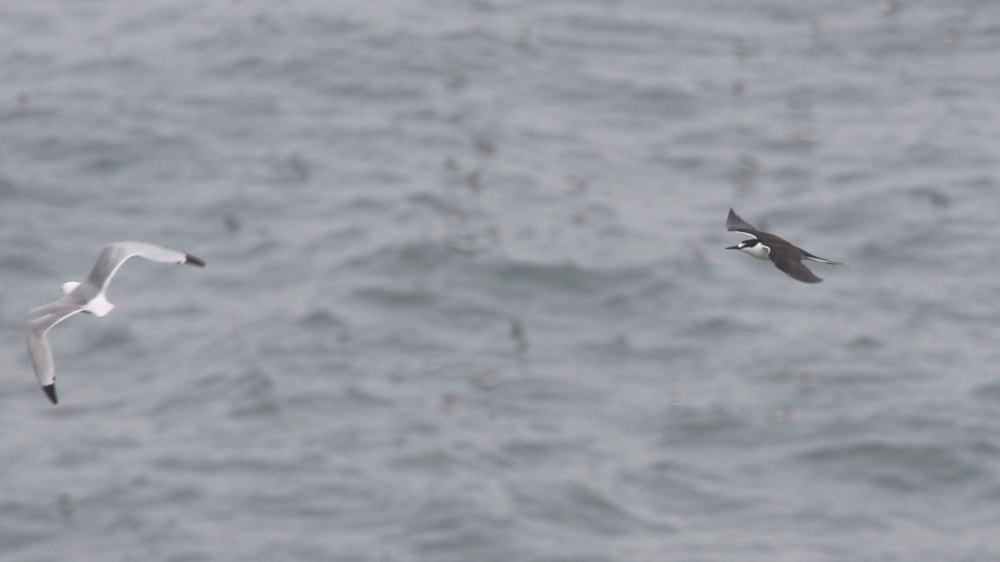
Sooty Tern, Bempton Cliffs RSPB, East Yorkshire (Will Scott).
Another excellent find was the adult Great Spotted Cuckoo at the north end of Iona, Argyll, on 23rd. Still there on 25th, it's the fourth individual seen across Britain and Ireland this year, and one wonders how long it might have been around. Although not attributed 'mega' status on a British scale, it's very much worthy of the title north of the English-Scottish border. Just a second for Scotland and the first since 1959, it also represented a first for Argyll. With no further sign after the initial sighting on 19th, a male Black-headed Bunting at Noness, Shetland, looked to have conformed to the species' usual habit of being brief – however, it then turned up in nearby Sandwick on 22-23rd, where it proved gettable.
Great Spotted Cuckoo, Iona, Argyll (Jim Dickson).
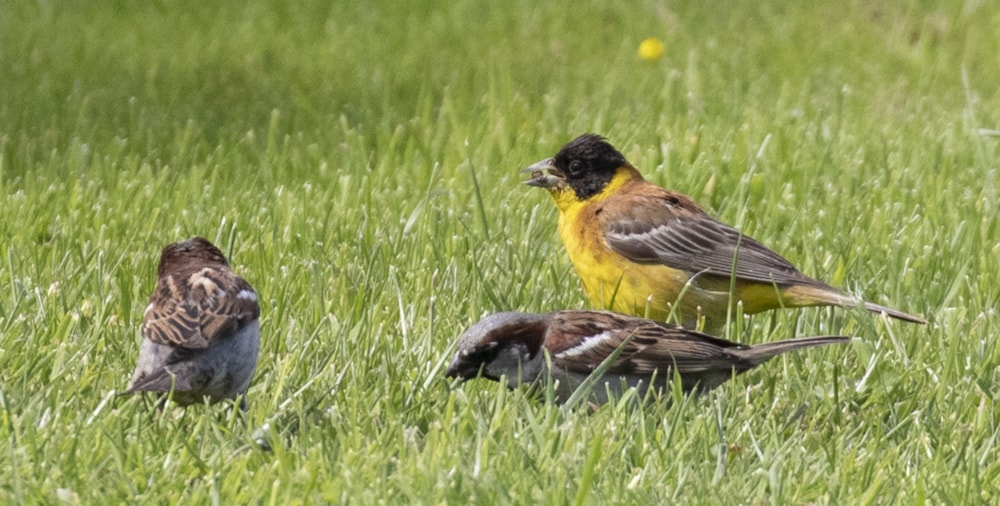
Black-headed Bunting, Sandwick, Mainland, Shetland (Roger Riddington).
Further eastern flavour was provided by the continuing Eastern Olivaceous Warbler, which was seen again on Fair Isle on 20th, and the Black-winged Pratincole at Frampton Marsh, Lincs, which continued to entertain to 21st.
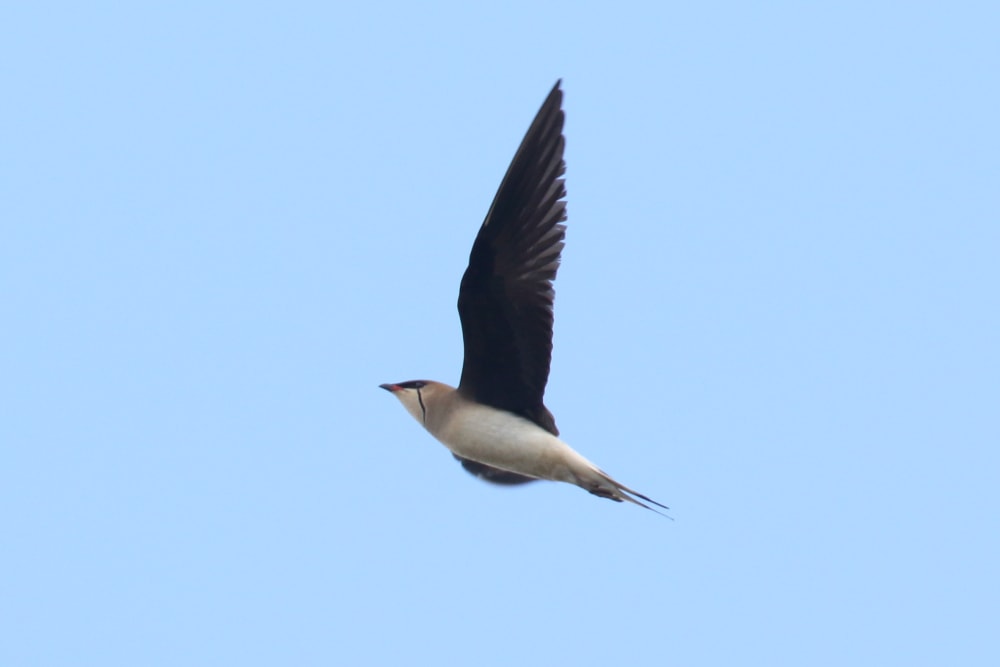
Black-winged Pratincole, Frampton Marsh RSPB, Lincolnshire (Andrew Jordan).
Bucking the eastern trend was the year's third Dark-eyed Junco. As with the year's previous two birds, it was again a record for south-west England: this confiding bird chose the car park at Abbotsbury Swannery, Dorset, as its temporary home for the afternoon and evening on 21st. This represents the fourth county record and the first since spring 1993.
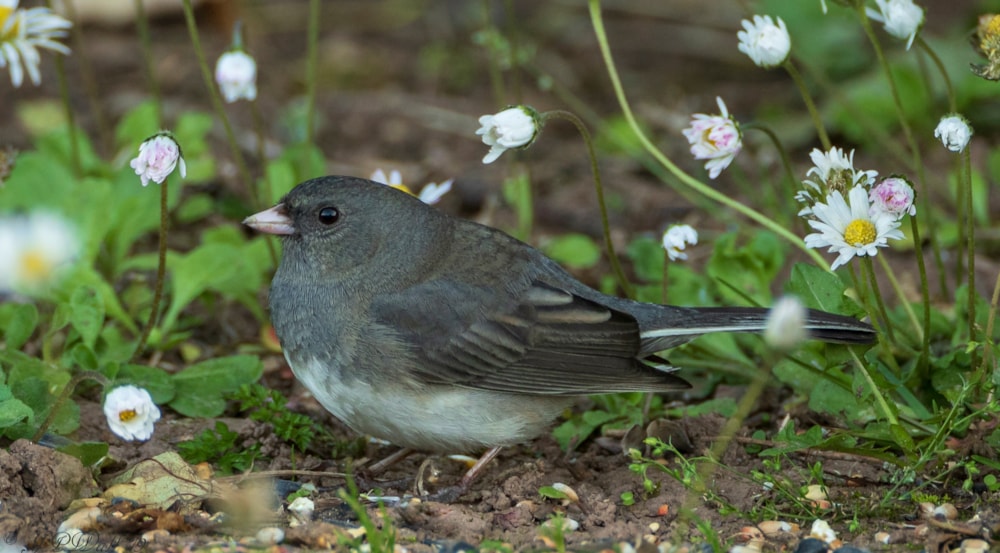
Dark-eyed Junco, Abbotsbury Swannery, Dorset (John Wall).
Perhaps the most significant occurrence of the week was out at sea, some 200 km off the Co Cork coastline: a rather smart South Polar Skua, representing a skilful identification as it drifted around in the skies above RV Celtic Explorer on 22nd. It could be argued that a well-documented occurrence of this species was overdue in Irish waters, particularly given that the likes of Zino's and Bermuda Petrel have been photographed in recent years, but that should not detract from the fact that this is clearly a very rare seabird anywhere in the north-east Atlantic.
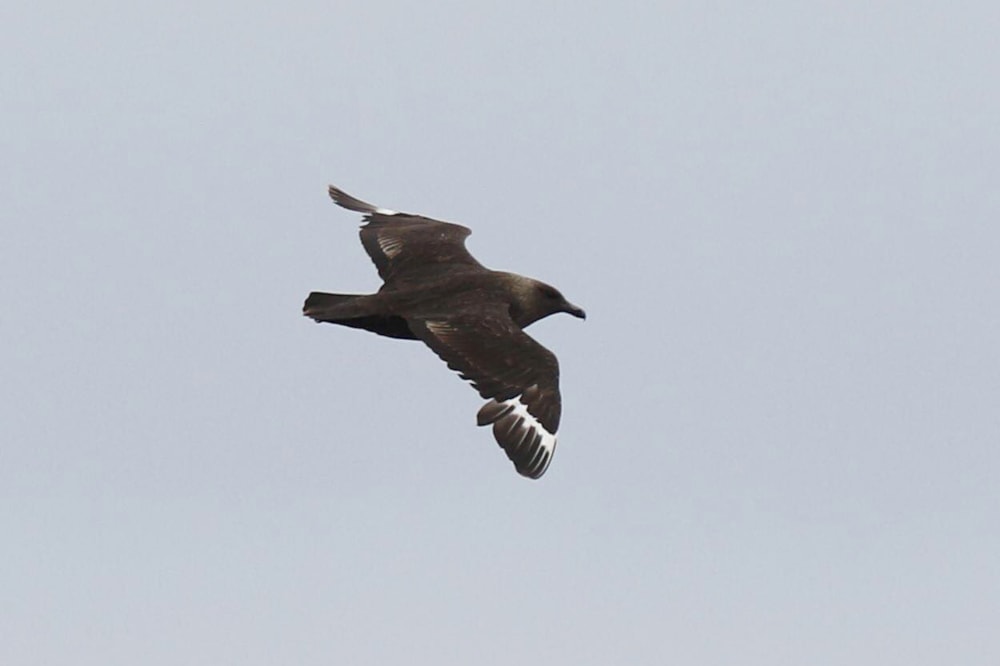
South Polar Skua, at sea, Cork (Paul Connaughton).
Whenever a strong passage of Common Swift commences at Spurn, East Yorkshire, at this time of year, locals immediately start smelling 'rare'. A fabulous track record in recent years has produced Pacific, Little and Alpine Swifts among the throng of commoner congeners, and this week delivered yet another classy Apodid. The story behind the discovery of a fly-through Pallid Swift there on 20th is in fact quite extraordinary. Picture the scene: you borrow a friend's camera to set it up optimally to photograph swifts, then fire off a single, random pot shot at one of the passing birds. On reviewing the images, you notice it looks 'interesting' … more specifically, Pallid Swift-like! And, what's more, it's still in view in time to get all of those gathered onto it before it continues off south and out of sight. Could things have gone more seamlessly? It would seem unlikely.
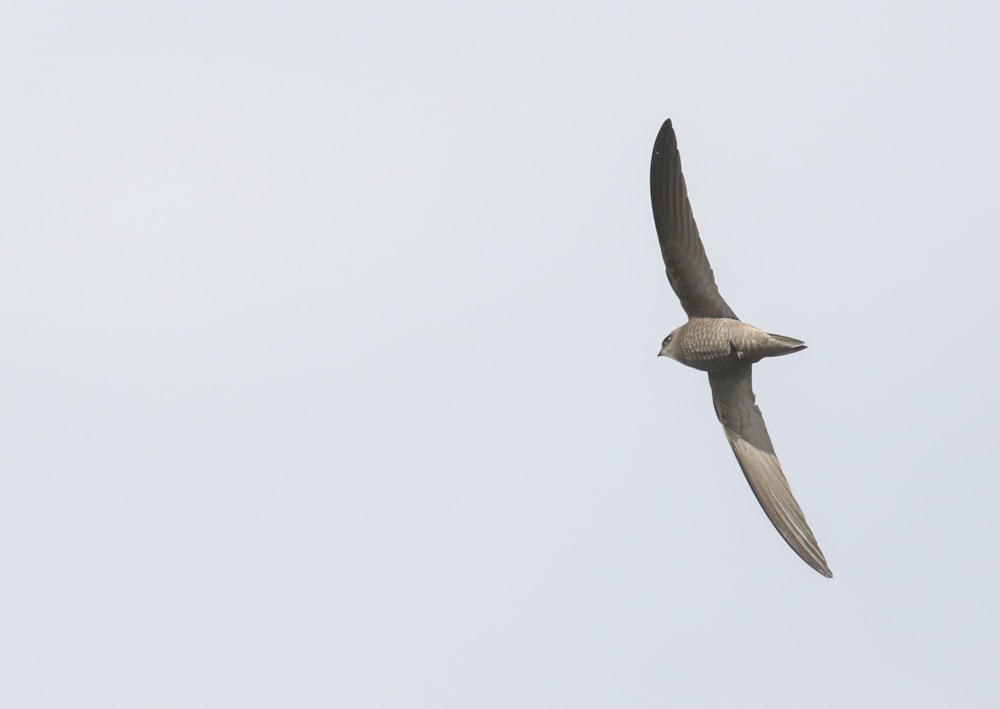
Pallid Swift, Spurn YWT, East Yorkshire (Jacob Spinks).
Even more peculiar were the circumstances surrounding the week's only Alpine Swift. A non-birder found the swift trapped in a warehouse at Mather Mill in Leigh, Greater Manchester, on 21st. It was successfully captured, duly photographed and then released, at which point it flew off strongly to the south.
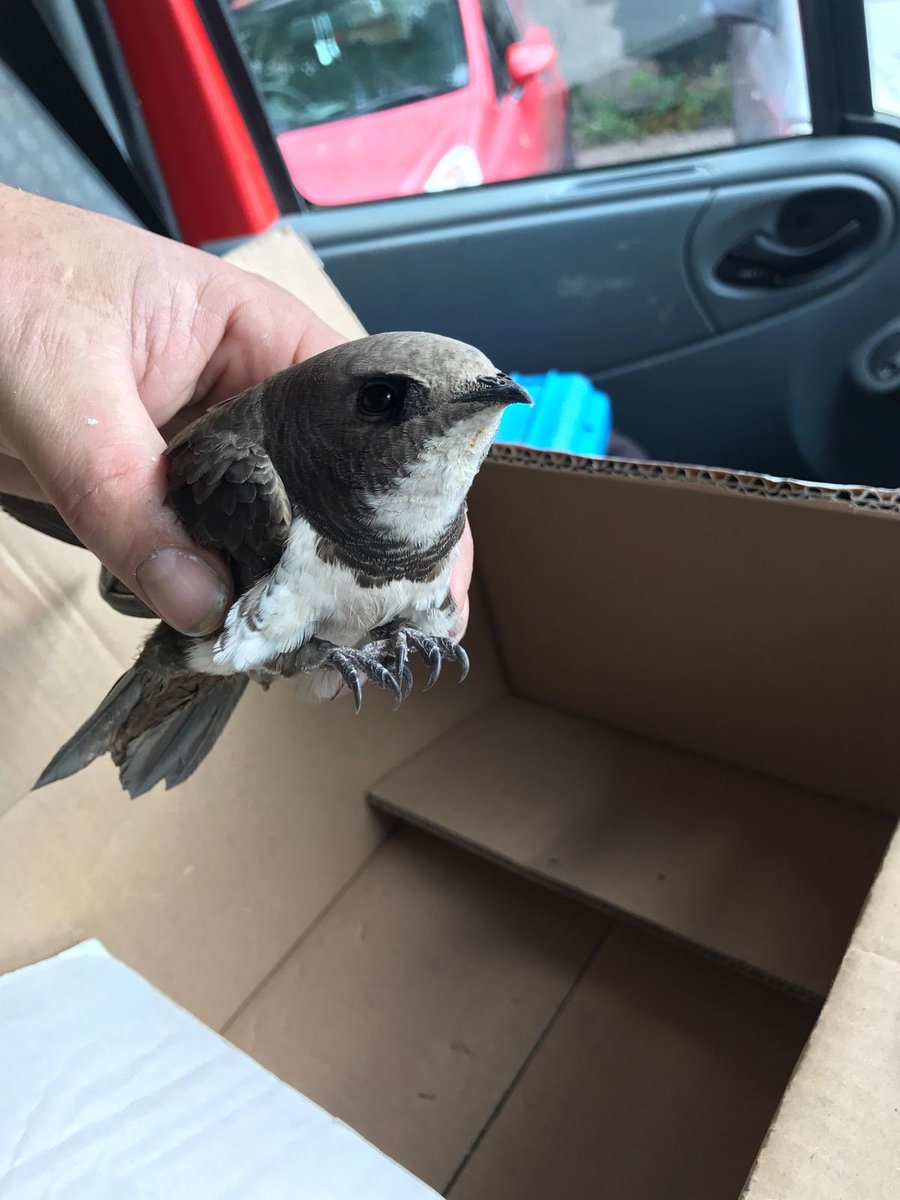
Alpine Swift, Leigh, Greater Manchester (Rob Brooks).
An adult Marsh Sandpiper appeared at the classic location of Cliffe Pools RSPB, Kent, on 19th, lingering for the remainder of the week but often proving extremely distant – this is the third year in a row that the species has occurred here, although the past two have concerned juveniles in July. It was a bit of a surprise to see the reappearance of the Lesser Yellowlegs at Scatness, Shetland, on 20th after a three-week absence. Meanwhile, the Long-billed Dowitcher lingered all week at Belfast Lough RSPB, Co Antrim. A Temminck's Stint was at Ring Marsh, Co Wexford, on 21-22nd, with another at Cresswell Pond, Northumberland, on 23rd. A Red-necked Phalarope was a brief visitor to Cresswell Pond, Northumberland, on 21st. Orkney scored a Gull-billed Tern on 23rd, when a bird was seen at Birsay during the late evening.
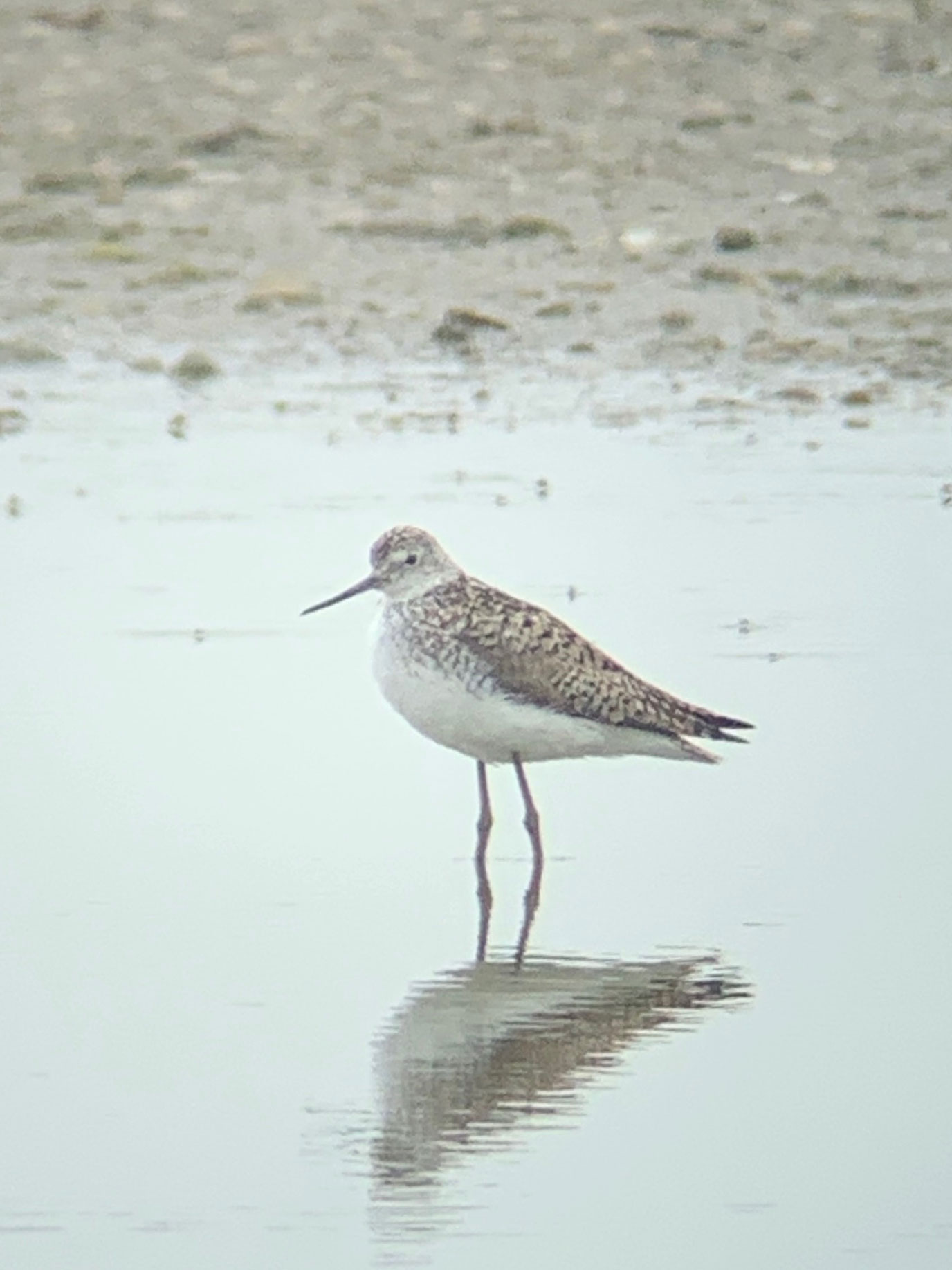
Marsh Sandpiper, Cliffe Pools RSPB, Kent (Frank Cackett).
The Baikal Teal hung on at Druridge Pools, Northumberland, all week, although could be quite elusive in the dense mid-summer vegetation. Both Blue-winged Teal continued at their respective chosen sites in Clyde, as did the American Black Duck at Strontian, Highland, while the King Eider relocated back to the seas off Nairn. American Wigeon lingered at two sites in Co Wexford, while a drake Green-winged Teal arrived at Cley NWT, Norfolk, on 19th, lingering thereafter – another stuck around on Unst, Shetland. The drake Ring-necked Duck was last seen at Grimley, Worcs, on 21st, with birds also still in residence at Llyn Bran, Clwyd, and Radipole Lake RSPB, Dorset. The Ferruginous Duck hung on in South Yorkshire, as did two Surf Scoter at Dunnet Bay, Highland.
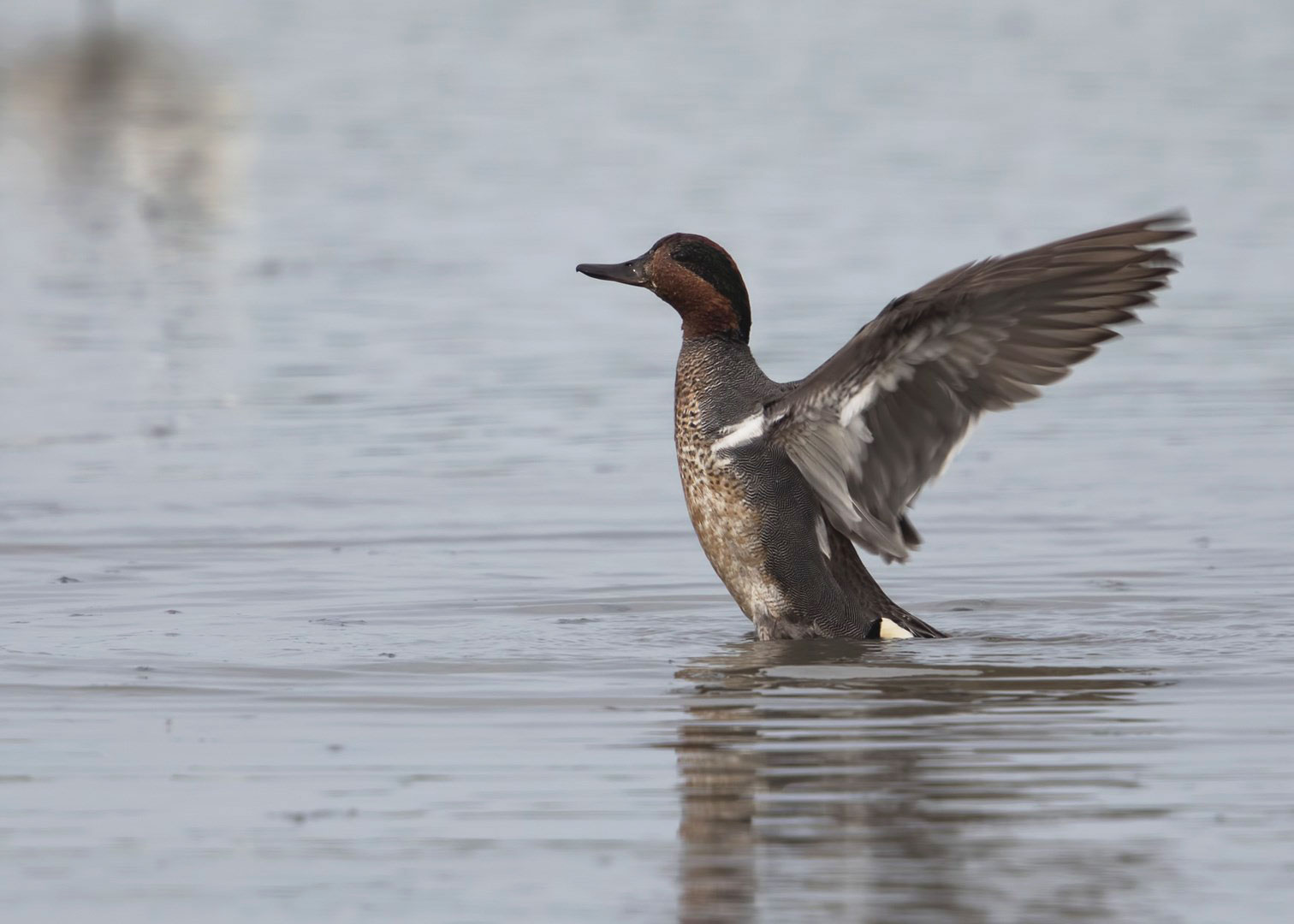
Green-winged Teal, Cley Marshes NWT, Norfolk (Marian Markham).
Flyover Purple Herons were at Rimac, Lincs, on 21st and Stodmarsh NNR, Kent, on 22nd, while the adult remained in residence at Titchwell RSPB, Norfolk, throughout the week. An immature Black-crowned Night Heron called in briefly at Chigborough Lakes EWT, Essex, on 23rd before departing to the north. Glossy Ibises remained in Dorset, Gwent, Lancashire, Co Wexford and Co Antrim. What is perhaps the same Black Stork seen at various other north Scottish sites in recent weeks was noted flying over Bonar Bridge, Highland, on 15th (but only reported on 19th).
A Snowy Owl was a new discovery near the summit of Mount Brandon, Co Kerry, on 20th, while the resident female was again reported from St Kilda, Outer Hebrides, on 24th. Montagu's Harrier is very much a rare bird in Britain these days, making records from St Osyth, Essex, St Mary's Bay, Kent, and Medmerry RSPB, West Sussex, notable.
Durham's Great Reed Warbler was last reported at Low Barns NR on 19th, but the West Yorkshire individual at Pugney's Country Park sang throughout the week – as did the Savi's Warbler at Cors Ddyga, Anglesey. The Iberian Chiffchaff at Dunwich Heath, Suffolk, was still there on 19th, as were the long stayers in West Yorkshire and Lancashire mid-week. Another candidate was identified at Swalwell, Durham, on 21st, lingering thereafter. This contentious individual appears to be giving mixed song at times, while at least three recordings suggest it utters a Common Chiffchaff-like hueet call, which will likely prove a significant barrier to acceptance.
In Hampshire, the Icterine Warbler was again singing at Colemore on 19th but not subsequently. A singing Marsh Warbler was at Lodmoor RSPB, Dorset, from 22nd, with other songsters at Frampton Marsh RSPB, Lincs, on 20th and Lizard, Cornwall, on 20-21st, plus a couple on Unst, Shetland. Unst also claimed one of three singing Blyth's Reed Warblers, with the others on North Uist and near Livingston, Clyde. An Eastern Subalpine Warbler visited Fair Isle, Shetland, on 19th, with another Subalpine – a male, thought likely a Western – was at Flamborough Head, East Yorkshire, on 24th.
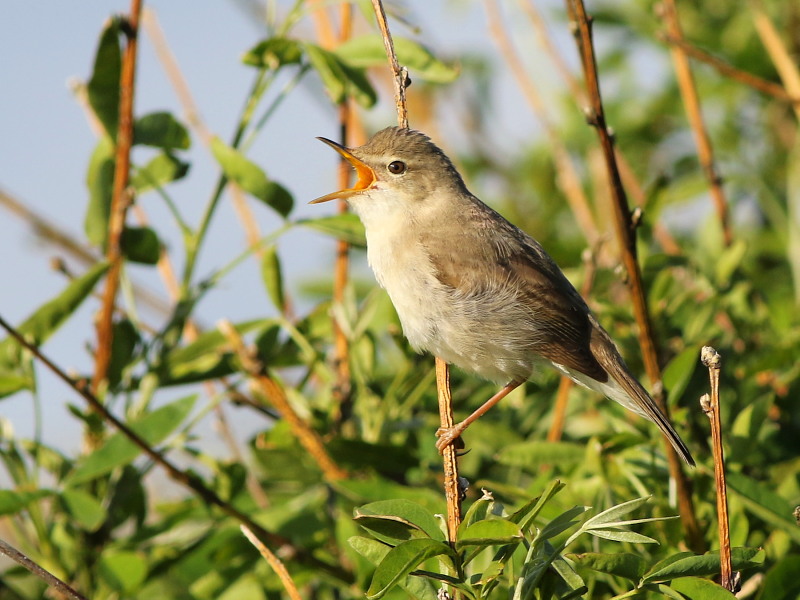
Blyth's Reed Warbler, Halligarth, Unst, Shetland (David Cooper).
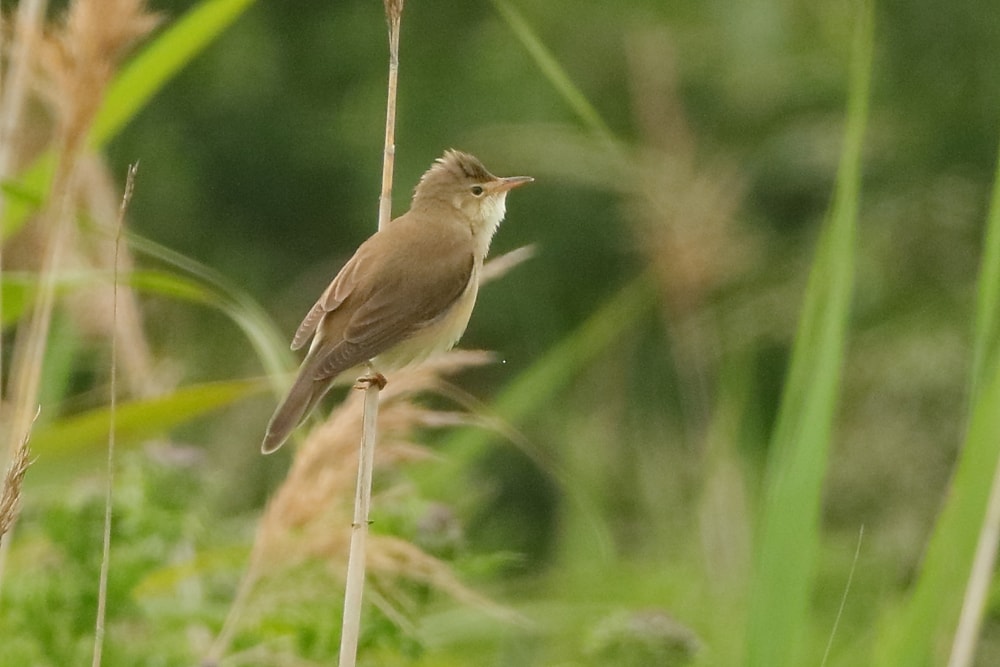
Marsh Warbler, Lodmoor RSPB, Dorset (Mike Trew).
Somewhat out the blue was a singing Red-breasted Flycatcher at Nanjizal, Cornwall, on 23rd. The sole Woodchat Shrike this week was a bird near Treen, Cornwall, on 20th. Scottish islands claimed the three Common Rosefinches seen, with Barra, Fair Isle and Unst logging one apiece. The European Serin remained on territory at Littlestone-on-Sea, Kent, while others were at Spurn, East Yorkshire, on 20th and at Portland, Dorset, on 22-23rd. A Greater Short-toed Lark visited Skokholm, Pembs, on 22-23rd.
A Hoopoe briefly visited Landguard, Suffolk, on 23rd, while the week's only Golden Oriole sang on Lundy, Devon, on 21st. A European Bee-eater lingered on St Mary's, Scilly, on 21-22nd, while it's entirely feasible that the two over Northrepps, Norfolk, on 23rd were the same pair seen over Landguard, Suffolk, on the morning of 24th and then, later in the afternoon, over Dungeness, Kent.
A healthy total of 11 Rosy Starlings was amassed, six of which were in Scotland. In Ireland, one was at Kilcredaun Marsh, Co Clare, on 20th, while there were four in south-west England, including two in Cornwall as well as singles in Devon and Somerset.
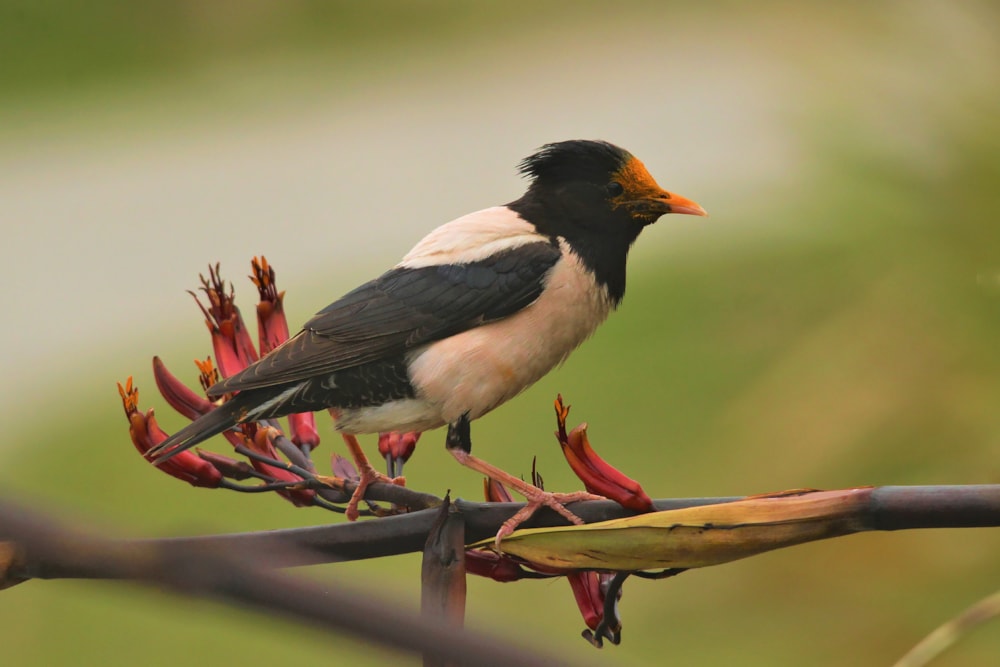
Rosy Starling, Gwithian, Cornwall (Paul Freestone).
Western Palearctic
It was a lively week around the region and one of the major talking points was a Red-wattled Lapwing in The Netherlands, which initially spent a day on Texel on 19th before relocating to Ameland on 23rd. It later transpired that this bird had also been seen in Bavaria, Germany, on 31 May and in Belgium on 11 June. It closely follows the Grey-headed Lapwing seen in Norway and Sweden earlier in the spring and the less adventurous of birders is likely to suggest a mass break-out from a collection, which of course remains a distinct possibility. However, the reality is not that simple and it only takes a few seconds of looking at images of the Red-wattled to notice how bleached and worn its upperparts are, which would be entirely consistent with it having been somewhere very sunny, very recently ... hopefully the relevant rarities committees take it seriously and assess its credentials objectively, even if it ultimately fails to make the grade.
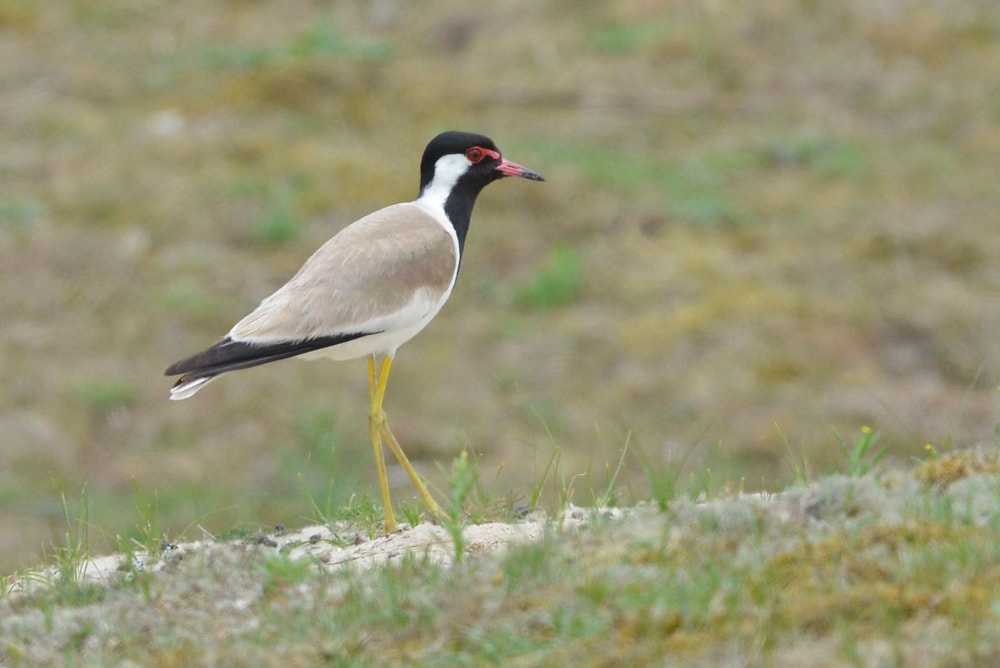
Red-wattled Lapwing, Texel, North Holland (Arnoud B van Berg).
A species that should be considered much more seriously across Europe, now that mass importation has ceased, is Red-headed Bunting. A beautiful adult male was a very welcome arrival to Salo, Finland, on 21st, lingering at the site thereafter. It's as long ago as 2004 that Britain enjoyed one of these birds – a stark contrast to the dark days of legal bird trading in latter half of the 20th century, when small flocks would often show up – another on British soil would no doubt be very popular.
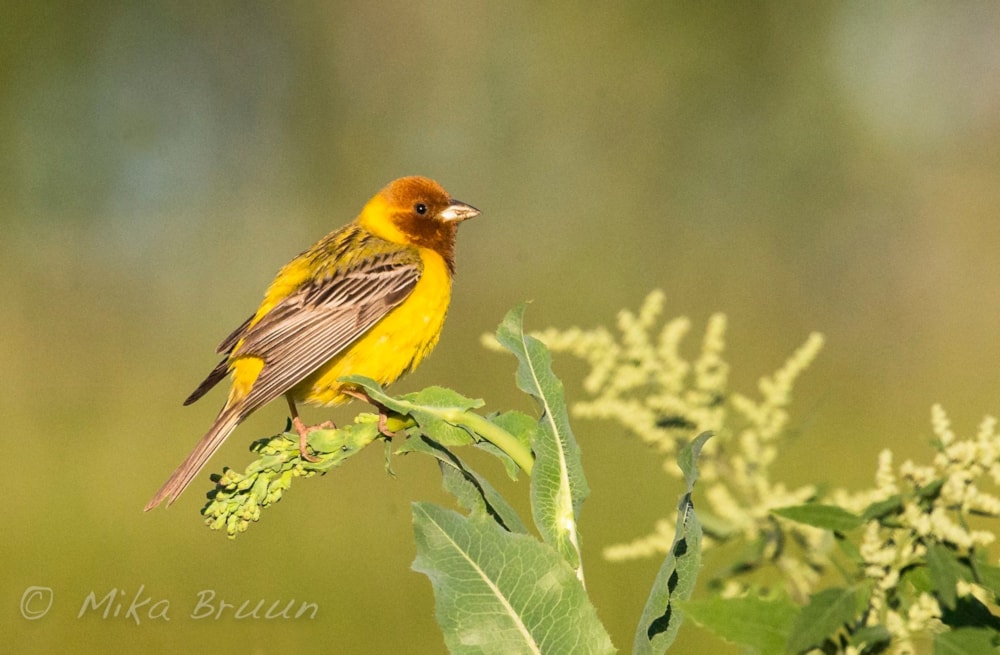
Red-headed Bunting, Salo, Southwest Finland (Mika Bruun).
The Red-footed Booby remained reliable around the harbour at Caleta de Velez, Spain, throughout the week, while another rare seabird record concerned a pale-morph Trindade Petrel at sea south of Pico, Azores, at the weekend. Semipalmated Plover is a regular occurrence in the Azores, but June records are few and far between – thus a breeding-plumaged adult at Horta, Faial, on 21st was notable.
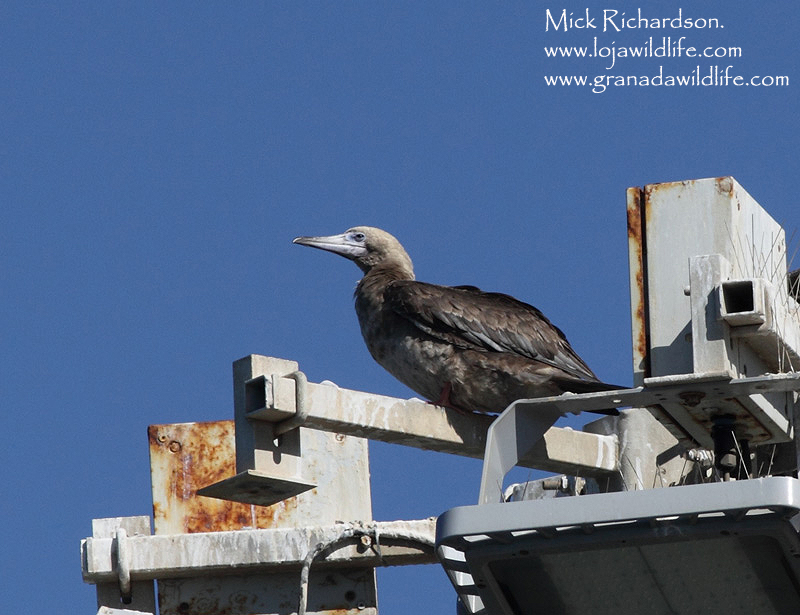
Red-footed Booby, Caleta de Velez, Andalucia (Mick Richardson).
A Dutch first came in the form of a singing Green Warbler at Vlaardingen on 24th, although it had gone before the identification was realised and a twitch could commence. Also in The Netherlands, the Pied Crow commuted between Ameland and Schiermonnikoog and the Nutcracker remained in Wageningen, while in Belgium there were reports of River Warbler and Cinereous Vulture.
Austria's first Franklin's Gull was at Lake Constance on 22nd, while there was a Great White Pelican at Lake Neusiedl. Three further Great Whites continued their prolonged stay at Étang des Landes, France.
Finally, to leave this column on a poignant note, it was heartening to see footage of a Yellow-breasted Bunting singing its mournful song on the island of Hailuoto, Finland, on 20th. Though brief, this is strikingly close to Oulu, where the species used to breed prior to the shocking decline and range contraction that has been witnessed over the past 25 years. It's perhaps fanciful to think that a relict population might still exist in Finland, but it should at least act as a beacon of hope for conservationists worldwide. All is not lost.
Ääni haudan takaa! Ensimmäinen #kultasirkku Suomessa sitten 2007, tänään aamulla Hailuodon Marjaniemessä (© Kalle Hiekkanen). Erittäin ilahduttava havainto Suomessa hävinneeksi luokitellusta lajista, vaikka tn. kyseessä on vain yksittäinen harhailija. pic.twitter.com/60KvtBkRZk
— BirdLife Suomi (@BirdlifeSuomi) June 20, 2019


